

Suunto Blog

Welcome to Suunto Summit!
The fifth instalment of Suunto Summit, a celebration of our community and our collective passion for sport and the outdoors, will be held in January 2020 in Ylläs, in Finnish Lapland. We will start the weekend with a visit to Suunto factory and Suunto HQ in Vantaa and then travel by an overnight train to Ylläs, north of the Arctic Circle, to experience the beauty of northern Finland.
The participants for Suunto Summit 2020 are: Alberto from Spain, Alexandre from Brazil, Alpinefex from Germany, Dorn from USA, Lotta from Finland, Maja from Sweden, Majo from Philippines, Marie from UK, Matteo from Italy, Max from USA, Philipp from Germany, Sandra from Australia, Sawna from USA, Thumb K from Korea, and Xiaohua from China. Welcome to Suunto Summit!
Thank you to all who applied! We are humbled to have such a passionate community. It was very inspiring to hear your stories and to get to know you a little bit. Happy adventures and hope to meet you another time!Excitement at the 2018 Suunto Summit. Watch the event recap here
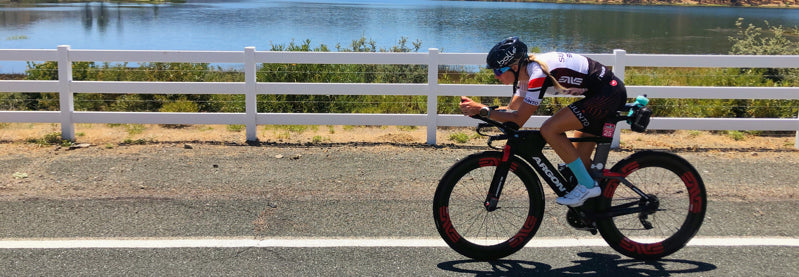
One triathlete’s journey through hell and back to the Kona start line
Doctors told her she would never run or race again. Kelsey, then 31, was lying in a hospital bed, her body battered and bruised after a truck hit her, and her vision for her life in ruins. She decided to prove the doctors wrong.
After recovering from the accident Kelsey drove herself hard. She refused to give up. While the determination was admirable, she now admits it bordered on reckless.
“I spent the next year trying to come back, but was plagued with more injuries and frustration,” Kelsey explains. “I gained a lot of weight and fell into a depression where I coped by going out at night, drinking way too much, and just not really living life as a pro athlete.”
Kelsey began swimming competitively when she was six years old. Later at college, she competed in Division 1 before moving to the Olympic Training Center in Colorado Springs as a member of the USA Triathlon National Team. She completed her first triathlon as a senior high school student in 2001, and was hooked.
With her life in tailspin after the accident, Kelsey got close to quitting triathlon. But then she met Mike, her now coach and boyfriend, who helped her turn everything around.
“The new path I chose to go down was life changing, but not easy,” she says. “Mike got me healthy for the first time years. But when I did decide to start racing again, I was in for a rude awakening. I moved up from ITU (International Triathlon Union races) to the 70.3 distance and finished dead last in most of those races.”
She was going in the right direction. But some old bad habits were holding her back. Eventually Mike gave her an ultimatum: get a job and make triathlon a hobby or commit 100% and make triathlon her job. “It took a good week for me to decide to go ‘all in’, but when I did, everything switched for me,” she says.
The decision empowered her; in 2017 she won her first Ironman 70.3 at Victoria, then backed that up with a win at Ironman 70.3 Manta the following weekend. She has been on the podium at almost every race since, securing her first Kona slot this year at age 36.
“This just goes to show you that if you work really hard and don’t give up, amazing things can happen!” she says.
Kelsey takes over our our Instagram stories this weekend. Follow along as she prepares for Kona!
READ ALSO
How (not) to qualify for Kona
Road to Kona: Cody Beals' clear race strategy
Road to Kona: 5 tips to train effectively as a couple
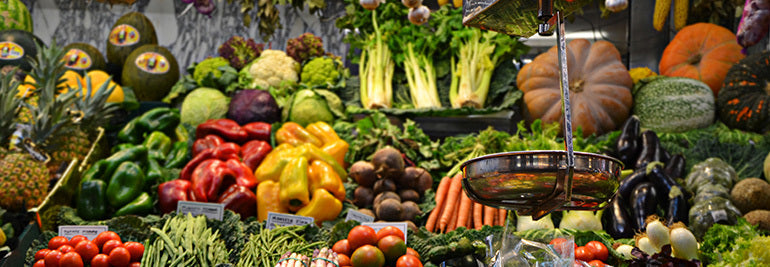
Fuelling the engine: 6 principles of nutrition for athletes
When she's not in the mountains, you can find Emelie Forsberg in her garden or preparing delicious meals. © Matti Bernitz
How and what we eat is personal to each one of us. Some of us feel better and more energised by certain foods, while others feel quite differently. Regardless of our personal view, one thing we all have in common is that eating well is essential for top performance.
In our recent article series “Fuelling the engine” we heard from eight athletes and trainers about how they stay fuelled (see the end for the article list). What’s more interesting than their differences, is what they have in common. We’ve combed through and put together six basic principles of nutrition for athletes.
Find your rhythm
Suunto HQ is lucky to have in-house personal trainer and athlete Matias Anthoni walking around the office. He offers training and nutrition advice to whoever is interested. He says improving how often you eat can improve what you eat. Skipping meals is a no-no for dedicated athletes because it causes energy crashes and bad dietary decisions, which result in poor performance. He advises to get into a rhythm of having a healthy meal every three hours.
Get organized
To eat six or more well balanced meals a day demands forward planning. It’s pretty hard, if not impossible, to maintain this if you’re operating on a day-to-day basis. Ryan Sandes, Emelie Forsberg, Mel Hauschildt and Lucy Bartholomew all emphasised the importance of being well organised and planning ahead. They sometimes make extra portions of meals at the beginning of the week to have later in the week when they know they will be busy. Being organised means making sure there are plenty of easy, go-to meal ingredients available, too.
Balanced meals
There are a number of different aspects to having a balanced diet. Ultracycling man Omar di Felice sees it as maintaining a proper balance of carbohydrates, protein and fat, with fatty food being essential for his epic extreme rides above the Arctic Circle every winter. This balance of carbohydrates, protein and fat is what nutrition expert Dr. Rick Kattouf II also drills into his clients. He believes every meal – for dedicated athletes in training – should include this ratio: 50 to 60 % carbohydrates, 15 to 25 % protein, and 15 to 25 % fat. Balance also means eating a variety of foods to make sure you are taking in enough minerals and vitamins. Ski mountaineer Greg Hill tries to have a balance of colors in his meals.
Fresh is best
One thing that came through loud and clear from all our athletes and experts is the importance of eating fresh foods. For Emelie Forsberg and Lucy Bartholomew this means preferably straight out of the earth. As an avid gardener and farmer, Emelie grows and harvests much of what she eats. Lucy, ski mountaineer Greg Hill, Mel and Ryan all try to avoid eating packaged foods, instead choosing foods that are as close to the source of production as possible.
Whole is the goal
Should go without saying: avoid processed food and food with refined sugar. Instead, all our athletes opt for whole foods. Ryan Sandes questioned the idea that recovery shakes could ever replace the nutritional value of whole food. Don't take shortcuts; take the time to eat well. It’s self kindness.
Enjoy yourself
Emelie, Ryan and Greg all said they don’t get uptight about food. Emelie has a relaxed and intuitive approach to food, and Ryan and Greg are happy to allow themselves to enjoy a pizza or a burger each week. Greg cautions not to try to be perfect; aim to make the bulk of what you eat fresh and healthy. “It’s important to enjoy life as well,” Ryan says.
Click below to read articles in our Fuelling the Engine series:
Fuelling the engine: talking nutrition with Lucy Bartholomew
Fuelling the engine: talking nutrition with Emelie Forsberg
Fuelling the engine: a commonsense approach to nutrition
Fuelling the engine: talking nutrition with Ryan Sandes
Fuelling the engine: talking nutrition with Ultracycling Man
Fuelling the engine: talking nutrition with Mel Hauschildt
D.I.E.T (disaster imminent every time), and three unchanging principles of nutrition for athletes
Fuelling the engine: talking nutrition with Greg Hill
Lead images:
Photo by ja ma on Unsplash
© Craig Kolesky / Red Bull Content Pool
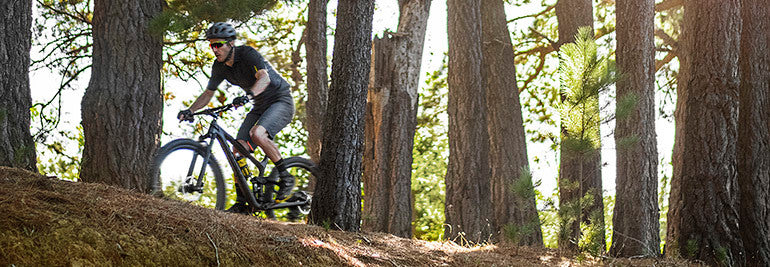
6 ways to find new MTB trails (that don’t involve Google)
Reaching for the Google is an instinctive impulse to answer almost every question that pops into our heads. With countless important questions, such as, “what is the world’s ugliest dog?”, or, “what to do if a ginger kid bites me?”, the internet has an answer for everything.
Yes, it’s also a valuable place to search for new MTB trails. But sometimes what is mirrored back is impersonal, superficial and without context. It lacks the richness that comes from hearing from a real person. Ask any investigative journalist, and they will tell you, you can only get so far with Googling; finding people to talk to is where the real story is.
To help you get the scoop on the most awesome local trails, we’ve put together a list of sources to consult.
Talk to your local bike shops
Bike mechanics and retailers talk to local trail aficionados everyday on the job. Chances are they are one themselves. Take your bike in for a tune up, and strike up a conversation about the local trails. Make your question personal, rather than general: where are your favorite places to ride around here? Many shops organize group rides for their customers.
Visit your local MTB club
This will be a goldmine of intel. Most larger cities have MTB clubs or meetups, which usually have club outings and meetings. Get in touch, go along on a ride. Usually every club has a few people who all the other members revere as gurus of sweet trail. Volunteer for trail maintenance work that trail advocacy groups and clubs do. When you give, you are also more likely to receive!
Stop and say hello
If you’re out on a trail and cross paths with another MTBer, greet them and strike up a conversation. He or she might have some trail secrets to share that could open your horizon of biking possibilities.
Check out our heatmaps
The Suunto app’s Heatmaps feature allows users to select different activities – mountain biking, hiking, running and so on – to find places and trails popular with other users. Zoom in and look more closely at the paths, switch to satellite or terrain maps, to see whether the paths are forest roads or single trails and to better gauge popularity. And look at where people aren’t riding; maybe there’s something worth exploring there? Another trick is to switch to the trail running heatmap because trail runners usually prefer single trail – this might help you hone in on the best rides.
Follow other riders in Suunto app
In addition to using heat maps to find places to ride on Suunto app, get social: start following other Suunto app users, engage with them and see where they ride. You can create routes based on your friends’ activities and sync those to your Suunto for navigation.
Import routes from Strava
You can find awesome rides by following people on Strava. You can then save their routes and use them in your Suunto for navigation. You can also find and create routes and sync them to your Suunto with other external route tools or services, such as Komoot, Outdoor Active and Wikiloc.
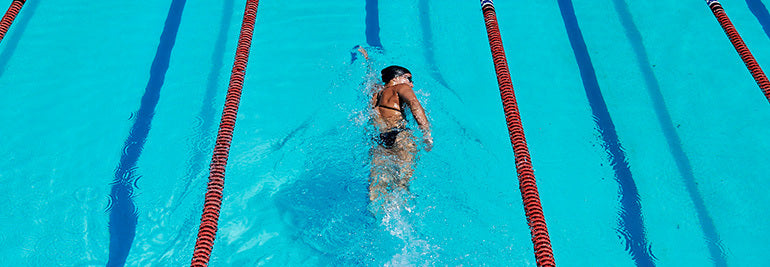
7 principles to help you find the flow
If there’s one way to get athletes talking, it’s to ask them about their flow experiences. They sit up, smile, and recall incredibly vivid experiences they will cherish for the rest of the lives. In many ways, flow states are the big reward that keep us going. Kind of like the panoramic view at the top of a mountain that makes the arduous climb worthwhile.
Flow states are a basic human potential. They are available to all of us, not only elite athletes, musicians and artists. With a little knowledge, dedication and practice, we can increase the likelihood of having a flow state experience.
According to mental coach Markus Arvaja, flow states are thoroughly immersive experiences. In his work with top ice hockey, football and tennis players, he tries to put in place the conditions that make flow states, when performance becomes almost effortless, more likely. Markus is a certified sports psychology consultant and senior lecturer in coaching at Finland’s Haaga-Helia University of Applied Sciences.
Click here to read our article explaining the science flow states!
No challenge, no flow
“First,” Markus says, “you need to have a feeling of being challenged, but that you have the competency and self confidence to handle it.” It’s a delicate balance. If the challenge is too great, and you feel out of your depth, lacking the skills for an activity, then it’s unlikely you will experience a flow state. There’s simply too much mental activity happening.
On the other hand, if the task is too easy, and the challenge is too low, then you are likely to be bored, also making flow state unlikely. The sweet spot is somewhere in the middle. So consider what might be a reasonable challenge for you, one that you feel confident in your skills and ability to take on.
Feel positive
The next essential condition for flow state experiences is motivation. “It helps if you can achieve your optimal arousal,” Markus explains. “You need to feel that you are really into the activity.” There’s another balance here. One extreme is boredom, the other is being too excited, almost nervous with anticipation. In the middle is relaxed enthusiasm. One way to achieve this is to remember the reasons you love your sport, what it gives you, a few minutes before you perform. Or maybe listening to music motivates you.
Automate the skill set
The reason top athletes and musicians experience flow is because they have put in the countless hours necessary to master their chosen activities. Whatever your sport, you need to have automated the skills required to experience flow. The action should come naturally from the body without any need for thinking or assesment. “If you don’t trust your technique, it’s hard to achieve the flow,” Markus says. “It’s important you train so much that you are well prepared and can get let go and let it happen. The moment you start to think too much, it’s hard to be in the flow.”
One thought at a time
Did we mention that thinking too much might obstruct a flow state? In the mindfulness movement, teachers talk about the “monkey mind”. Like we often jump from one thought to another, a monkey jumps from branch to branch incessantly. Constant thinking is tiring and distracting. “One good thing to do is to shift your focus to the activity at hand,” Markus says. “For example, if you are a tennis player, you could totally concentrate on moving your feet. It helps to concentrate on one or two things only. If you can do that, you might start to notice the flow. Just play the game and enjoy!”
Have a plan
Having a plan is very helpful, Markus says. For example, if you’re going to run a trail race, the plan might include having your own guidelines for pace, fuelling and heart rate. Well before the race, you might study the course, even train on it to get familiar, so on race day you know when to push and when to take it easy. “Make a plan at home,” Markus says. “That’s what we do in team sports. The less you think on the day, the better you perform.”
Practice mindfulness
“Mindfulness certainly helps,” Markus says. “If your mind is free of worry, and unnecessary thoughts, you can stay in the present moment. It’s good to learn to quiet the mind, to turn off the inner critic. Learn to simplify and focus on one thing.”
Play!
Yes, it’s important to have goals, to have a plan, to automate skills, and to be motivated. But if we get too serious, we risk getting too severe with ourselves and then the sport we once loved can feel like a strain. “Just play!” Markus always tells his clients. “It helps when you are positive and having fun. You can’t force the flow!”
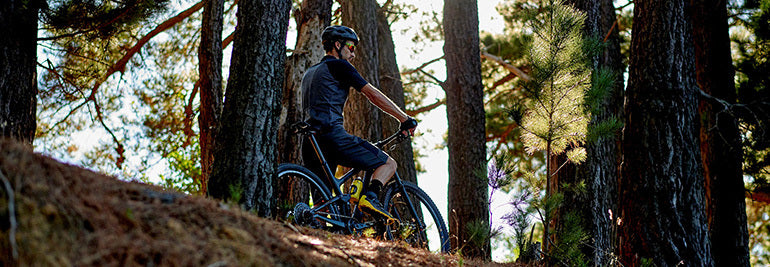
Finding the flow
Photo by Alex Gorham on Unsplash
Studies on flow states show when athletes are experiencing them the thinking part of their brain is offline. “The less you think, the better you perform,” quips Markus Arvaja, a certified sports psychology consultant and senior lecturer in coaching at Finland’s Haaga-Helia University of Applied Sciences. “We’ve studied athletes, the best of the best, studied their brains when they perform, and they have less brain activity in their prefrontal cortex. Which means they have automated their skills so they can purely enjoy their sport.”
When he’s not teaching at university, Markus, himself an ice hockey, football and tennis player, works as a mental coach for Finland’s national women’s ice hockey team and the national youth tennis team. He’s a board member of the Finnish Society of Sports Psychology. He’s passionate about people performing at their absolute best.
“Studies show peak flow states are intrinsically motivating experiences,” he says. “People become so involved in an activity that they are on automatic pilot, totally absorbed in that experience. It’s a merging of action and awareness. Thing is, you can’t force yourself to go into flow. But their are elements that help you enter into the flow space.”
Flow states, peak performance, being in the zone, runner’s highs; these are all interchangeable terms describing the transcendent experiences athletes, artists, musicians and creatives report having. Maybe you’ve experienced one yourself. Time slows down, you become totally immersed in the task at hand, it feels effortless, maybe the world seems more vivid, and you have sense of mastery. They are when athletes have their best performances and, according to Mihaly Csikszentmihalyi, who wrote a seminal book on the topic, they are a key aspect of human happiness. It’s something we can all experience, not only elite athletes and artists.
Neuroscience has revealed much about what’s happening in the brain during a flow state. Brain waves change from beta, more rapid waves underlying waking consciousness, to somewhere between alpha and theta waves, where we daydream and first enter into sleep. This is when many people have their best ideas. Neurochemicals associated with pleasure and performance – endorphin, serotonin, dopamine, norepinephrine and anandamide – are the raw ingredients of flow. Perhaps the most interesting fact is how different regions of the brain respond during flow; for example, studies have found the prefrontal cortex, the area of the brain associated with self monitoring – and also self criticism – goes offline during flow. Instead of constantly analysing and evaluating, we do things spontaneously.
“Sometimes coaches can interrupt the flow happening for athletes by giving too much information for the athletes’ minds,” Markus says. “It’s better to say only one or two things.
“For flow, your mind should be free of worry and unnecessary thoughts. Stay in the present moment by quieting the mind and turning off the inner critic. Mindfulness certainly helps with this.”
Stay tuned for the next article in our series on flow: the ingredients of flow.














































































